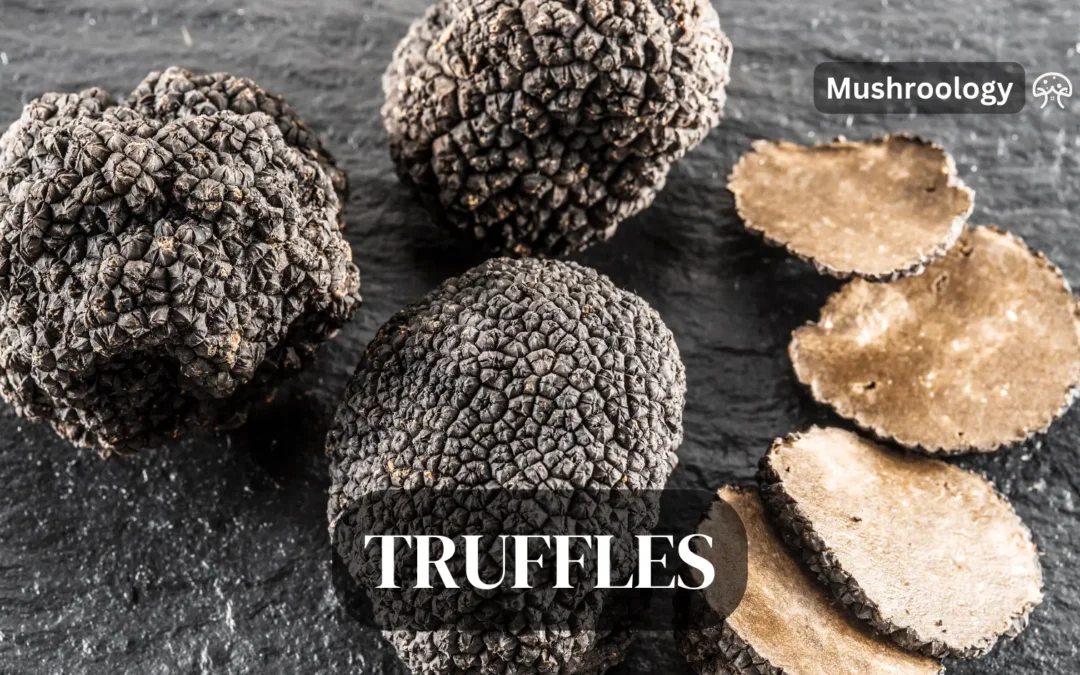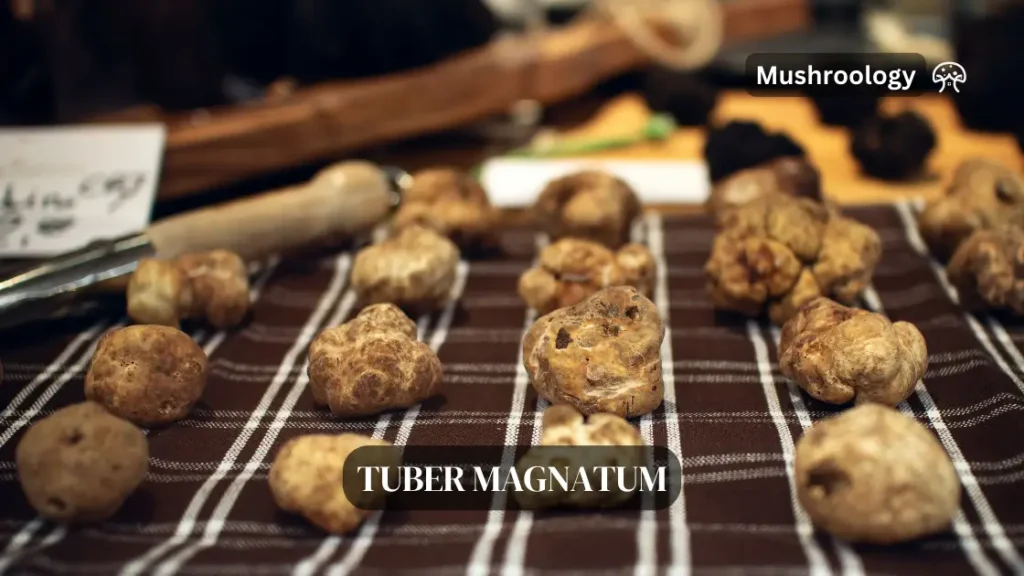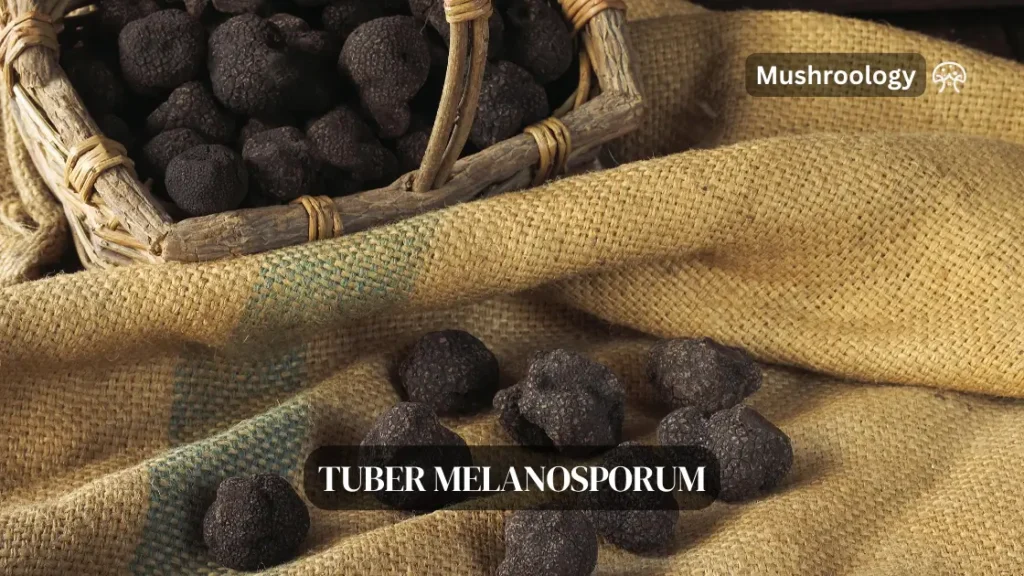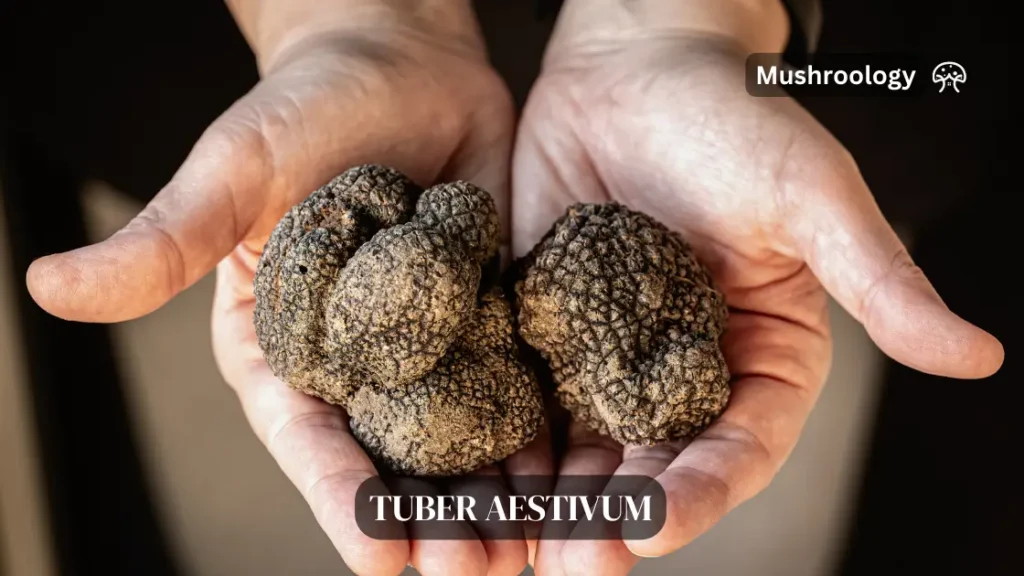
A Comprehensive Guide to Truffles
Truffles, those mysterious underground fungi with a reputation for luxury, hold a unique place in the culinary world. But beyond their gourmet status, their biology, types, and hunting methods are equally fascinating.
Scientific Classification and Growth
Truffles belong to the genus Tuber within the family Tuberaceae. They are characterized by hypogeal (underground) growth, developing as the fruiting bodies of the fungus. Unlike typical mushrooms, truffles grow beneath the soil surface, usually at depths ranging from a few centimetres up to one meter, depending on the species and soil conditions.
Symbiotic Relationship
The symbiosis between truffles and trees involves a mutual exchange where truffles provide minerals and water to the trees, while receiving sugars and other organic compounds necessary for their growth. This relationship is crucial for the truffle’s lifecycle and is primarily established with broad-leaved trees and conifers such as oaks, beeches, pines, hazels, and birches.
Spore Dispersal
Truffles rely on animals for spore dispersal, a process known as mycophagy. The intense aroma of mature truffles attracts wild animals, which consume the truffles and disperse the spores through their feces. This interaction ensures the continuation of the truffle species and contributes to the fungal ecosystem.
Nutritional and Elemental Composition
Truffles are composed of approximately 80% water, with the remaining part consisting of fats (1-6%), fibers, and mineral salts such as potassium, calcium, sodium, magnesium, iron, zinc, and copper. These components are derived from the symbiotic tree, highlighting the truffle’s dependency on its host for nutrient acquisition.
Recent studies have explored the possibility of differentiating truffle species based on their elemental composition, including levels of nickel (Ni), chromium (Cr), manganese (Mn), magnesium (Mg), arsenic (As), and copper (Cu). This differentiation is significant for understanding the Tuber genus’s biodiversity and potential applications in truffle cultivation and conservation.
The King of the Truffles: Tuber magnatum (White Truffle)

Characteristics of Tuber magnatum
- Common Name: White Truffle or Piedmont Truffle
- Description: Tuber magnatum is renowned for its strong aroma and distinct flavor, highly prized in culinary applications. Unlike other truffle species, it has a pale cream or yellowish color, with a smooth exterior.
- Habitat: Prefers calcareous soils, forming symbiotic relationships with the roots of hardwood trees, especially oaks and hazelnuts. It thrives in specific microclimates found in the Piedmont region of Italy, though it’s also found in parts of Croatia and Slovenia.
- Harvesting Season: Late fall to early winter, typically October to December, when their aroma is at its peak.
Cultivation Challenges
- Mycorrhizal Symbiosis: Establishing the symbiotic relationship between the Tuber magnatum mycelium and the host tree roots is complex and requires precise soil and environmental conditions.
- Soil and Climate Requirements: Requires well-drained soils with high lime content and a specific range of temperatures and humidity levels, which are difficult to replicate artificially.
- Harvesting: White truffles grow underground, and their discovery requires trained dogs due to their buried growth and to avoid damage to the delicate mycelium networks.
Conservation and Sustainability
- Tuber magnatum is a wild species that has resisted attempts at commercial cultivation due to its specific ecological requirements, making wild harvesting the primary acquisition method. This emphasises the importance of sustainable harvesting practices to ensure the longevity of natural truffle habitats and populations.
Culinary Uses
- White truffles are used sparingly due to their intense flavour and aroma, often shaved over dishes at the end of preparation to enhance pasta, eggs, and risottos with their luxurious character.
The Black Diamond: Tuber melanosporum (Black Truffle)

Characteristics of Tuber melanosporum
- Common Name: Black Truffle or Périgord Truffle
- Description: Tuber melanosporum is celebrated for its intense aroma and complex flavor profile. It features a dark, rugged exterior and a black interior marbled with white veins. The truffles are typically the size of a walnut but can grow larger under ideal conditions.
- Habitat: This species forms mycorrhizal associations primarily with oak and hazelnut trees, thriving in calcareous soil types. It is native to Southern Europe, particularly France, Spain, and Italy.
Cultivation Techniques
- Site Selection and Soil Preparation: Successful cultivation starts with selecting a site with the correct soil pH (7.5 to 8.3) and adequate drainage. Lime may be added to adjust soil pH.
- Tree Inoculation and Planting: Host trees (usually oak or hazelnut) are inoculated with T. melanosporum spores before planting. It’s crucial to ensure the young trees are healthy and the root system is not damaged during planting.
- Irrigation and Care: Regular irrigation, especially during dry periods, is essential without waterlogging the soil. Weed control and protection from pests are also critical.
Harvesting and Marketing
- Harvest Season: The harvesting season for black truffles typically runs from November to March. Dogs trained to detect the truffles’ scent are used to locate them underground.
- Market Demand: Tuber melanosporum is highly sought after in the culinary world, commanding high prices in the market due to its flavor and rarity.
Challenges in Cultivation
- Long-term Investment: Trees inoculated with Tuber melanosporum may take 5 to 10 years to produce truffles. Patience and meticulous care of the orchard are required.
- Environmental Factors: The success of truffle cultivation is highly dependent on specific environmental conditions that are challenging to replicate and maintain.
Economic and Ecological Importance
- Tuber melanosporum cultivation can significantly contribute to rural economies, offering a sustainable agricultural practice that encourages biodiversity and soil health.
While the commercial cultivation of Tuber melanosporum is a complex and long-term endeavor, the potential rewards are considerable, both economically and gastronomically.
The Everyday Truffle: Tuber aestivum (Summer Truffle)

Characteristics of Tuber aestivum
- Common Name: Summer Truffle
- Description: Tuber aestivum is known for its more subtle aroma compared to its more famous relatives, the black and white truffles. It features a black exterior and a dark brown interior marbled with white veins. The aroma is pleasant but less intense, which makes it a versatile ingredient in culinary uses.
- Habitat: This truffle species is more widespread than others, found in various European countries, including France, Italy, and parts of Eastern Europe. It forms symbiotic relationships with the roots of several tree species, such as oaks, hazels, and beeches.
Cultivation Insights
- Soil and Climate: While naturally less choosy about its environment, Tuber aestivum still prefers calcareous soils with good drainage and a symbiotic relationship with specific trees. The climate should have distinct wet and dry seasons to mimic its natural habitat.
- Orchard Establishment: Similar to other truffles, establishing a truffle orchard for Tuber aestivum involves inoculating the roots of host tree saplings with truffle spores. However, Tuber aestivum is considered easier to cultivate due to its wider ecological tolerance.
- Harvesting: Usually harvested from late spring to late summer, hence the name Summer Truffle. Dogs or pigs are used to locate the truffles underground, similar to other truffle types.
Culinary and Economic Aspects
- Culinary Uses: Its milder flavor and aroma make it an excellent introduction to truffles for culinary enthusiasts. It can be used fresh, shaved over dishes, or infused into oils and sauces to add a subtle truffle flavor.
- Economic Value: While not as pricey as the Black Périgord or White Alba truffles, the Summer Truffle still holds significant value in the market due to its culinary appeal and broader availability.
Challenges and Considerations
- Pest and Disease Management: Like all truffles, Tuber aestivum orchards can be susceptible to pests and diseases affecting the host trees or the truffles themselves. Regular monitoring and sustainable management practices are essential.
- Market Positioning: Given its more accessible price point and flavor profile, the Summer Truffle offers opportunities for broader market penetration, from gourmet restaurants to home kitchens looking for an introduction to truffle flavors.
While Tuber aestivum may not command the same awe and market price as its rarer counterparts, its cultivation and culinary use provide an excellent gateway into the world of truffles, making the “Everyday Truffle” a cherished species for growers, chefs, and food lovers alike.
Beyond the Big Three: Other Notable Truffles
Truffle enthusiasts often focus on the renowned Tuber melanosporum and Tuber magnatum, but the fungal kingdom offers many other truffles worth exploring. While less known, these species contribute unique flavors and aromas, enriching culinary experiences worldwide.
Tuber borchii (Bianchetto Truffle)
- Characteristics: Similar in appearance to the white truffle but smaller, with a more variable shape and a potent aroma distinguishing it from its more famous counterpart.
- Culinary Use: Valued for its strong flavor, it’s used in a variety of dishes to provide a depth of taste akin to the white truffle but at a more accessible price point.
Tuber brumale (Winter Black Truffle)
- Characteristics: This truffle has a dark, rough exterior and a black interior with white veins. It’s harvested in winter, as the name suggests, and has a robust, somewhat spicy flavor.
- Culinary Use: Often used in sauces and oils to impart its distinct flavor, making it a versatile ingredient in the kitchen.
Tuber indicum (Asian Black Truffle)
- Characteristics: Resembling the Périgord truffle, this species is found primarily in China and other parts of Asia. It’s less aromatic and flavorful, which reflects in its lower market price.
- Culinary Use: Used as a substitute for the more expensive Tuber melanosporum, it’s incorporated into dishes that require a truffle presence without the premium cost.
Tuber aestivum var. uncinatum (Burgundy Truffle)
- Characteristics: Offering a delicate aroma and flavor, this truffle variety is harvested in the fall. It has a dark exterior and a brownish interior with white marbling.
- Culinary Use: Appreciated for its versatility, it can enhance a wide range of dishes, from simple pastas to elaborate meat courses.
Cultivation Insights
While the cultivation of truffles like Tuber melanosporum and Tuber magnatum is well-documented, these lesser-known species also offer potential for cultivation under the right conditions. They generally require the same symbiotic relationship with specific host trees and soil conditions, though the exact parameters can vary by species.
Challenges and Opportunities
The lesser-known truffles provide an exciting opportunity for cultivators looking to diversify their truffle production. While they may not command the high prices of the black and white truffles, they offer a gateway to the truffle market for regions and growers new to truffle cultivation.
The Truffle’s Hidden Life Cycle
Like other mushrooms, truffles’ lifecycle involves complex processes that intertwine with their environment, particularly with host trees, to ensure their growth and reproduction.
Spore Dispersal and Germination
- Truffles begin their life as spores, typically dispersed through animal consumption and subsequent excretion, benefiting from the natural movement of fauna in their habitats. This process ensures the wide distribution of truffles despite their subterranean nature.
Symbiotic Relationship Formation
- Upon germination, truffle spores develop into mycelium, which seeks out the roots of specific host trees to form a symbiotic relationship known as mycorrhiza. This partnership is crucial, as truffles provide essential nutrients to the tree, while in return, they receive sugars and other compounds necessary for their growth.
Mycelial Network Development
- The mycelium of truffles extends through the soil, interlocking with the tree’s root system, creating an extensive underground network that is capable of supporting truffle development. This network is vital for nutrient exchange and supports the truffle as it develops from a mere hyphal knot into a mature fruiting body.
Fruiting Body Formation
- The actual “truffle” is the fruiting body, which forms and matures underground. Environmental triggers such as temperature changes, soil moisture levels, and seasonal shifts signal the mycelium to divert resources towards the development of these fruiting bodies.
Maturation and Harvest
- Truffles mature over several months, often requiring specific conditions to develop fully. Once mature, truffles emit strong, distinct aromas that attract animals (including humans), facilitating their discovery and subsequent spore dispersal, thus completing the lifecycle.
The Hunt for the Elusive Truffle
While the search did not specifically highlight sections on “truffle hunting,” the nuances of truffle cultivation and the complexity of their lifecycle, as discussed in “Growing Gourmet and Medicinal Mushrooms” by Paul Stamets, indirectly illuminate the intricate dance of discovery that is truffle hunting. Let’s draw from the foundational understanding of truffle growth and cultivation to expand on this fascinating subject.
Truffle hunting, an age-old practice steeped in tradition and secrecy, is as much an art as it is a science. This section delves into the captivating world of seeking out the hidden gems of the culinary world – truffles.
The Role of Truffle Dogs and Pigs
- Truffle Dogs: Dogs, with their keen sense of smell, have become the preferred companions for truffle hunters. Trained from a young age, they can sniff out truffles buried deep underground without harming the delicate mycelium networks.
- Truffle Pigs: Historically, pigs were used in truffle hunting due to their natural affinity for truffles. However, their tendency to eat the truffles they find and the difficulty in managing them in the field have made dogs the more popular choice.
Techniques and Traditions
- Season and Time: The best time for truffle hunting varies with the species but typically occurs in fall and winter. Hunters often go out early in the morning or after rainfall when the ground is moist, and truffle aromas are more pronounced.
- Secrecy and Knowledge: Locations of productive truffle grounds are closely guarded secrets, passed down through generations or discovered through years of experience and observation of the land and its ecology.
The Science Behind the Search
- Symbiotic Relationships: Understanding the symbiotic relationships between truffles and their host trees can guide hunters to potential hot spots. Truffles form mycorrhizal associations with specific types of trees, so knowing which trees support truffle growth can significantly increase hunting success.
- Soil and Climate: Successful truffle hunting also requires knowledge of soil types and climate conditions favorable to truffle growth. Calcareous, well-drained soils with a certain pH level are ideal for many truffle species.
Conservation and Sustainability
- Responsible Hunting: As truffles are an integral part of forest ecosystems, responsible hunting practices are essential. This includes using trained animals to avoid digging up large soil areas and disturbing the habitat.
- Impact on Truffle Populations: Overharvesting and habitat destruction pose significant threats to wild truffle populations. Sustainable practices and the cultivation of truffles can help preserve these precious fungi for future generations.
The Future of Truffle Hunting
With advances in technology and a growing interest in mycology, the future of truffle hunting may include more scientific approaches to identifying promising sites, such as soil analysis and the use of drones or GPS mapping. However, the traditional skills and instincts of the truffle hunter and their four-legged companions will remain invaluable in the search for these elusive fungi.
Savoring the Truffle Experience
The science behind the truffle’s aroma and flavor is a fascinating and complex subject deeply rooted in volatile organic compounds (VOCs) chemistry. Truffles produce a rich array of VOCs that contribute to their distinctive and highly prized scent profile.
Volatile Organic Compounds in Truffles
- Diversity of VOCs: Truffles emit a high amount of VOCs, with more than 200 identified across various species. These compounds include alcohols, ketones, aldehydes, dimethyl sulfide, dimethyl disulfide, diacetyl, ethylphenol, furaneol, and octenol.
- Complex Aroma: The truffle’s aroma is not the result of a single molecule but rather a combination of many VOCs. The structure of each VOC molecule typically includes a hydrocarbon skeleton with additional atoms such as oxygen, nitrogen, and sulfur.
- Aroma Variation: The scent of truffles can vary depending on the species, maturation, climate, soil, and even the specific tree with which the truffle forms a symbiotic relationship.
Factors Influencing Truffle Aroma
- Genetics vs. Geography: While environmental factors like terroir have been thought to influence truffle flavor, recent studies suggest that a truffle’s chemical compound blend is more closely linked to its genetic background.
- Microbial Influence: The ecosystem of bacteria living symbiotically in and on the truffle also contributes to its scent, similar to how certain yeasts and bacteria affect the flavor of wine and cheese.
Chemicals Responsible for Truffle Flavors
- Dimethyl Sulfide: This compound is common across all truffle species and contributes to their earthy notes. It is also associated with the smell of rotten cabbage in ripe cheeses and the odor of farts.
- Androstenone: Found in truffles, this pheromone is produced by testosterone and can elicit different reactions in humans, from dislike to attraction.
- Umami Flavor: Truffles contain glutamate, which contributes to their umami flavor profile, a savory taste that enhances the overall sensory experience.
Preservation and Impact on Aroma
- Shelf Life: Fresh truffles have a limited shelf life, with their scent molecules diffusing away after being unearthed, decreasing aroma intensity over time.
- Preservation Methods: Boiling or freezing truffles can extend their physical lifetime but may destroy their texture and diminish their odors. Freezing preserves some scent but also affects texture.
Synthetic Scents
- Truffle Products: Many commercial truffle products use synthetic scents to mimic the natural odor of truffles, often using chemicals like dimethyl sulfide for black truffles and bis(methylthio)methane for white truffles.
In summary, the truffle’s aroma and flavor are the result of a sophisticated blend of volatile organic compounds influenced by genetics, environmental factors, and microbial interactions. The complexity of these compounds and the truffle’s short shelf life contribute to the rarity and high value of these gourmet fungi.
Beyond the Culinary: Truffles in History and Culture
Truffles have a storied past that intertwines with human history and culture, far beyond their current status as a culinary delicacy. These subterranean treasures have been a part of human diets since ancient times and have carried with them a sense of mystique and luxury throughout the ages.
Ancient Beginnings and Mythical Associations
- Sumerians: The earliest known consumption of truffles dates back to the Sumerians, around 4500–1900 BCE.
- Ancient Egyptians: Truffles were held in high esteem by the ancient Egyptians, who enjoyed them coated in goose fat.
- Greek and Roman Eras: Greek philosophers and Roman naturalists like Plutarch, Pliny the Elder, and Dioscorides wrote about truffles, attributing their growth to natural phenomena such as thunder. The Romans considered truffles a luxury food with aphrodisiac properties, enjoyed by emperors and the elite.
Cultural Beliefs and Superstitions
- Supernatural Qualities: Truffles were once thought to have supernatural qualities, with some believing they were a gift from the gods. The Greeks and Romans used them for therapeutic purposes, believing they provided eternal health.
- Medieval Distrust: During the Middle Ages, truffles fell out of favor, with the church at one point condemning them as the creation of the devil, dubbing them “witch’s fares”.
Renaissance Revival and Royal Patronage
- Louis XIV: The French king played a significant role in reviving truffles during the Renaissance, attempting to cultivate them, albeit unsuccessfully.
- Cultivation Breakthroughs: It wasn’t until the early 19th century that successful truffle cultivation began, with the establishment of the first truffle plantation by French agronomist Joseph Talon.
Truffles in Modern Times
- Truffle Hunting Traditions: Truffle hunters, or trufficulteurs, continue to forage for truffles with their trained dogs, a practice that is part of UNESCO’s Intangible Cultural Heritage of Humanity.
- Global Expansion: Truffle cultivation has expanded globally, with countries across the Southern Hemisphere and places like the United States and China joining traditional European producers.
The Future of Truffle Research
- Scientific Interest: Despite their long history, truffles have only been cultivated for around 50 years, and there is still much to learn about their biology and cultivation.
- Continued Allure: The mystery and allure of truffles persist, with ongoing research aimed at understanding and optimizing their growth for future generations.
A Word of Caution: Not All Truffles are Created Equal
Truffles, those elusive underground gems, have captivated our senses and wallets for centuries. But venturing into the world of these pungent delicacies requires a bit more than just a fancy nose and a hefty budget. Why? Because, like any luxury item, there’s a dark underbelly where fakers and unsustainable practices lurk.
First things first: Know your truffles. Before you dive headfirst into the truffle market, brush up on your knowledge. Different species have distinct characteristics, seasonality, and yep, price tags.
Familiarise yourself with the classics like the earthy Black Truffle or the garlicky White Truffle, and don’t be afraid to delve into lesser-known varieties like the Chinese Black Truffle or the Burgundy Truffle (trust us, their flavor profiles are equally amazing!). Research reputable sources and suppliers who prioritize authenticity and quality – remember, knowledge is power!
Now, let’s talk about those too-good-to-be-true bargains. We all love a good deal, but extreme caution is advised when it comes to truffles. Excessively low prices might indicate truffles past their prime, inferior quality, or even worse, fakes made with truffle oil or other ingredients.
Remember, these gems are precious and their price reflects the effort and skill involved in finding them. Trust your gut, do your research, and avoid shady deals that leave you with buyer’s remorse (and maybe a stomachache).
Sustainability matters, even for truffles! Unsustainable harvesting practices can threaten these precious fungi and their delicate ecosystems. Think of it like this: overharvesting is like raiding the cookie jar without letting it refill. It might be fun in the short term, but not so much in the long run. So, how can you be a responsible truffle consumer? Support suppliers who prioritise sustainable practices, like controlled harvesting and respecting the natural balance. This ensures future generations can enjoy these culinary treasures too!
Ethics matter too, especially when it comes to the truffle hunters. These skilled individuals dedicate their lives to finding these hidden gems, often working alongside specially trained dogs. It’s crucial to support hunters who receive fair compensation for their work and prioritize sustainable methods. Choose suppliers who collaborate with ethical hunters and prioritize the well-being of their animals and the environment. Remember, every bite should come with a clear conscience.
Ultimately, embracing the true truffle experience is about knowledge and responsibility. By educating yourself, supporting sustainable practices, and appreciating the value of these culinary gems, you’re not just indulging your taste buds, you’re contributing to a future where everyone can enjoy the magic of truffles. So, go forth, explore the truffleverse responsibly, and savor the real deal!
Bonus tip: Don’t be afraid to ask questions! Whether it’s to a knowledgeable seller at a gourmet market or a chef at a fancy restaurant, asking about the origin and sustainability practices behind the truffles shows you’re a responsible consumer who cares about the bigger picture. Now go forth and truffle responsibly!
